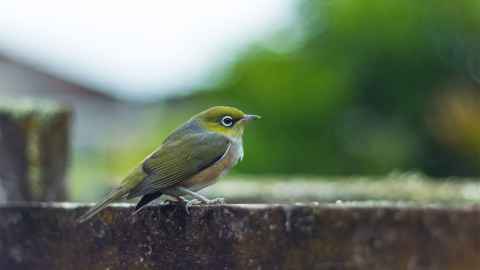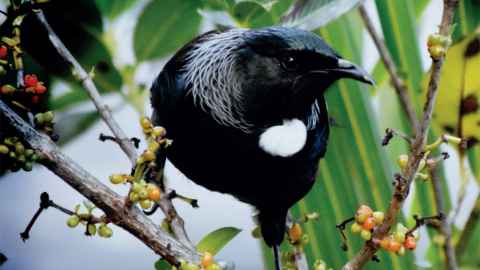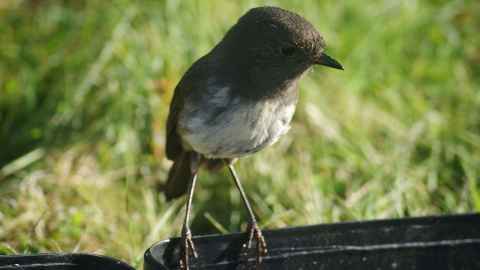Why the birds are back - and how to keep them here
13 April 2020
Opinion: Reduced noise, light and air pollution of lockdown means we can see and hear more birds and other wildlife. Margaret Stanley explains how to keep it this way.

With reports of puma in the streets of Santiago, monkeys roaming cities in Thailand and mountain goats in Llandudno, Wales, we have to wonder how wildlife and biodiversity is being affected by Covid-19 in New Zealand.
Facebook shows footage of sunfish coming into Wellington harbour, and fantails in the CBD – but how much of this is driven by Covid-19? Or is it simply because we’re not at work, instead we’re exploring our neighbourhoods and backyards more, and noticing biodiversity we hadn’t noticed before?
In areas like Auckland and Northland that are still under drought conditions, it’s difficult to disentangle the effects of Covid-19 on biodiversity from the effects of drought. Certainly, native plants in these regions have struggled to produce their usual bounty of fruit, and invertebrate life has been scarcer. Are the birds coming into our well-watered gardens to seek water or food resources?
Without a doubt there’s been a reduction in air pollution and noise pollution as traffic has reduced to a trickle. There’s also likely to be less light pollution around commercial areas, with office buildings no longer lit up while cleaners work the night shift. All of these things are great for birds, which are even more at risk from lung damage from air pollution than people, and seabirds become disorientated around light. Our research shows that traffic noise is usually high on weekdays in Auckland, recording 40 decibels even inside urban forest patches. The higher the decibels, the fewer native birds are present.

Some birds are better than others at adapting to cities. Feral pigeons are ubiquitous in cities around the world – what we call ‘urban exploiters’, while many of our native species can’t cope with the various disturbances in cities and are ‘urban avoiders’. Others, such as tūī and silvereye, fill the role of ‘urban adapters’ and make use of the food resources in suburban gardens. Piwakawaka (fantails) and riroriro (grey warblers) seem to be making more of an appearance now in cities throughout New Zealand. Hopefully, this is more than just us finally noticing them, perhaps they are enjoying the much less stressful city life.
We must take care to continue to set those backyard rat traps while on lockdown, keep our cats from roaming, and stop feeding bread! Our research shows that introduced birds, such as sparrows, benefit from the bread and their high numbers drive riroriro back out of our gardens.
Messier, less manicured vegetation helps piwakawaka and riroriro. Vegetation maintenance along roadsides, in parks, golf courses and on school grounds is not an essential service and so ecologists are looking forward to seeing some ‘wildness’ in the city the further lockdown goes on. Longer lawns lead to flowers for pollinators, ‘untidy’ leaves and twigs on the ground and untrimmed hedges and trees provide shelter and food resources for insects, all providing a feast for our insectivorous birds. However, people on lockdown at home are likely to be relieving boredom by mowing their lawns constantly and tidying their backyards. So perhaps piwakawaka won’t feel so welcome in our backyards!

One of the side benefits of Covid-19 is that we don’t have to convince people of the importance of green space and urban forest to their wellbeing anymore. People are enjoying their renewed connection to nature in their neighbourhoods. However, we must remember that access to green space and urban forest in New Zealand cities (at least in Auckland) is inequitable; people in low socio-economic areas tend to have less urban forest and street trees. So perhaps Covid-19 will be another catalyst for evening up the inequities in access to nature.
So after we come out of lockdown and work towards ‘resuming normal activities’, will we retain our nature connection? Will the birds be pushed back out of the city? Whether these benefits will be retained remains up to us. I’m hopeful that perhaps we’ll be a little more accepting of ‘messiness’ and less vegetation maintenance, that we’ll work at home a little more and drive less, and that we’ll be a little more aware of nature and the benefits connecting with it brings us.
Associate Professor Margaret Stanley is in the School of Biological Sciences at the University of Auckland.
This article reflects the opinion of the author and not necessarily the views of the University of Auckland.
Used with permission from Newsroom Why the birds are back - and how to keep them here 13 April 2020.
Media queries
Alison Sims | Research Communications Editor
DDI 09 923 4953
Mob 021 249 0089
Email alison.sims@auckland.ac.nz